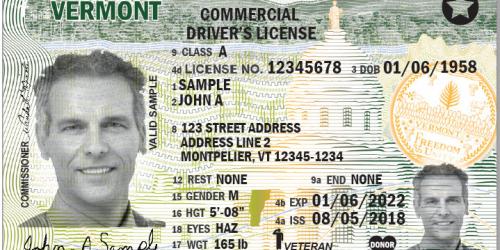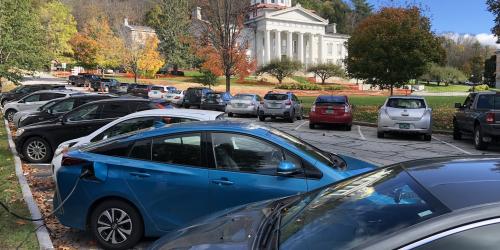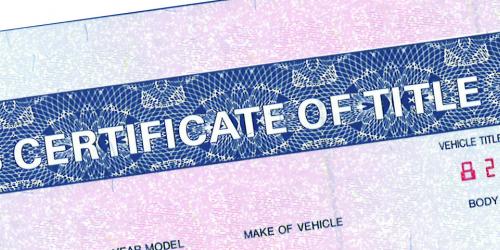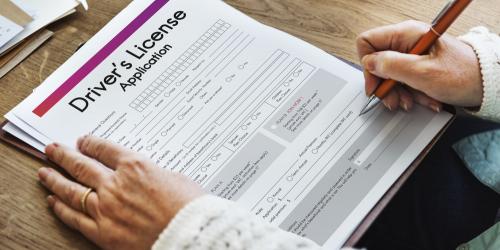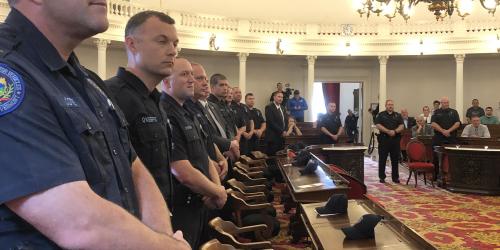Featured Article
July 25, 2024
Resumes will not be accepted via e-mail. You must apply online to be considered.
To apply for this position, visit careers.vermont.gov
Overview
This position will work at mobile unit locations for the DMV throughout Vermont. Work involves reviewing, verifying, coding, and processing applications for all motor vehicle registrations, driver's licenses, and identification cards. Duties include completing all types of applications, accountability for all fees and audits, completing daily deposits, completing weekly statistics, responding to emails for the information unit, completing supply orders, correcting batch errors, and are required to conduct exams that involve the administration of written exams, road exams, and Commercial Knowledge testing.
Supervision is exercised over subordinate Direct Client Support Specialists, and duties are performed under the direction of a District Office Supervisor.
Equal Opportunity Employer
The State of Vermont celebrates diversity and is committed to providing an environment of mutual respect and meaningful inclusion that represents a variety of backgrounds, perspectives, and skills. The State does not discriminate in employment based on race, color, religion or belief, national, social, or ethnic origin, sex (including pregnancy), age, physical, mental or sensory disability, HIV Status, sexual orientation, gender identity, and/or expression, marital, civil union or domestic partnership status, past or present military service, membership in an employee organization, family medical history or genetic information, or family or parental status. The State’s employment decisions are merit-based. Retaliatory adverse employment actions by the State are forbidden.
Total Compensation
You are offered a great career opportunity as a State employee, but it's more than a paycheck. The State's total compensation package features an outstanding set of employee benefits that are worth about 30% of your total compensation, including:
- 80% State-paid medical premium
- Dental Plan at no cost for employees and their families
- Flexible Spending healthcare and childcare reimbursement accounts
- Two ways to save for your retirement: A State defined benefit pension plan and a deferred compensation 457(b) plan
- Work/Life balance: 11 paid holidays each year and a generous leave plan; many jobs also allow for a flexible schedule
- Low-cost group life insurance
- Tuition Reimbursement
- Incentive-based Wellness Program
- Qualified Employer for Public Service Student Loan Forgiveness Program
Resumes will not be accepted via e-mail. You must apply online to be considered.
To apply for this position, visit careers.vermont.gov
Overview
The Motor Vehicle Direct Client Service Specialist will interact with a diverse population to process various motor vehicle-related transactions in a high-traffic, fast-paced office while maintaining excellent customer service. Work involves reviewing, verifying, and processing customer applications for vehicle registration, licensing, titles, tax payments, driver licenses/permits, non-driver identification cards, parking placards, plates, etc. The position will perform various monetary transactions while maintaining accuracy, control, and minimal errors.
This is a full-time position, and work will occur within the Rutland DMV office.
This position is anticipated to work up to 40 hours per week.
Equal Opportunity Employer
The State of Vermont celebrates diversity and is committed to providing an environment of mutual respect and meaningful inclusion that represents a variety of backgrounds, perspectives, and skills. The State does not discriminate in employment based on race, color, religion or belief, national, social, or ethnic origin, sex (including pregnancy), age, physical, mental or sensory disability, HIV Status, sexual orientation, gender identity, and/or expression, marital, civil union or domestic partnership status, past or present military service, membership in an employee organization, family medical history or genetic information, or family or parental status. The State’s employment decisions are merit-based. Retaliatory adverse employment actions by the State are forbidden.


